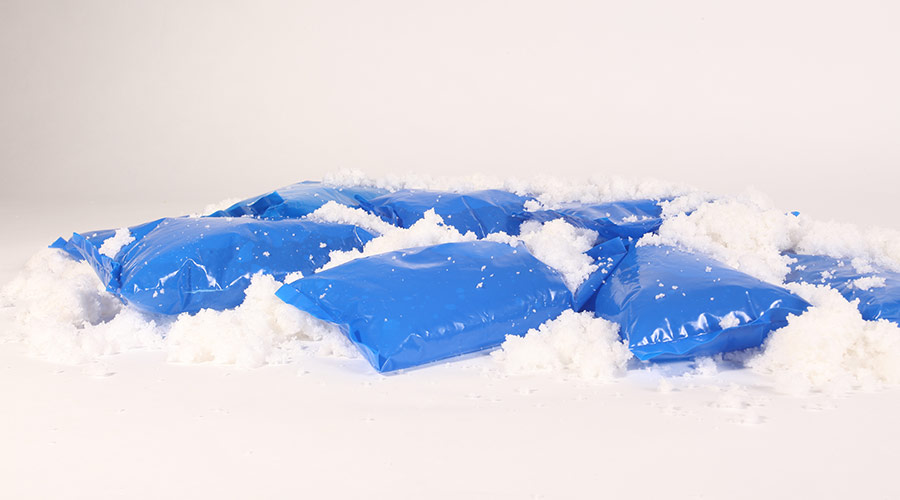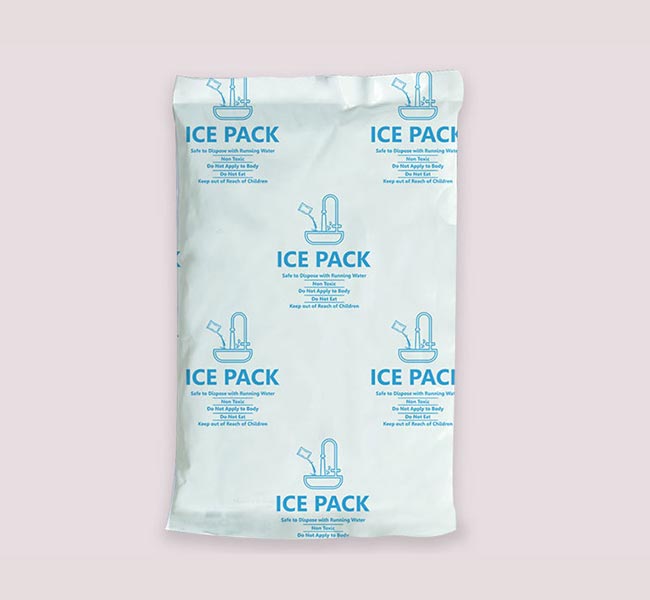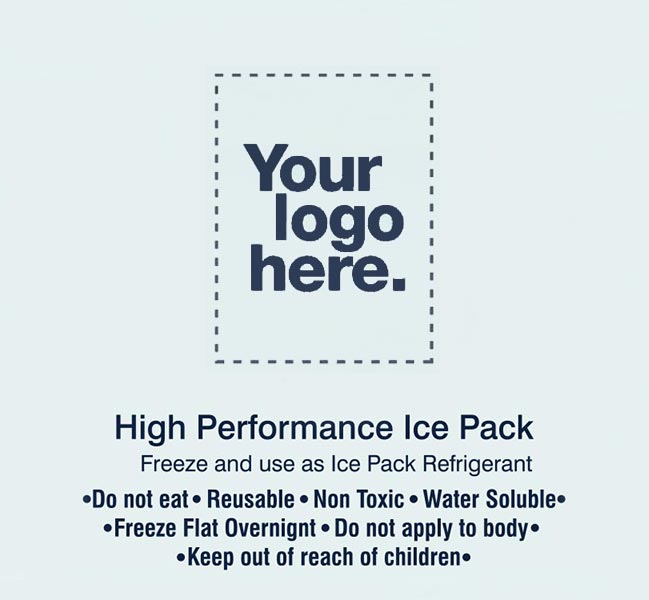Maintaining temperature control is critical to shipping sensitive goods such as chilled and frozen food products, chocolates and many pharmaceuticals, but what method of refrigeration is right for you? Your primary options are cold packs vs dry ice. Making the best choice for your product can be as easy as considering the primary issues.
What is the desired temperature range for your shipment?
Generally speaking, dry ice is the best choice for products that you need to keep frozen, while cold packs are best for maintaining the temperature of chilled goods above 32 degrees Fahrenheit (0 degrees Celsius). For example, in the food industry, the FDA requires that all raw protein perishable food items reach their destination at a maximum of 40 degrees F. Also, injectable medicines generally need to stay within 2-8 degrees C.
Benefits of dry ice
Dry ice is extremely cold. It maintains a temperature of about -109.3°F (-78.5 degrees C) as it evaporates or sublimates and becomes carbon dioxide gas. Because of this property, it is ideal for products that do not have a low-temperature threshold. Dry ice can lower product temperature so that it stays frozen longer. Dry ice is commonly used for ice cream products and sorbet as well as frozen meats and seafood. But never pack dry ice with products that are sensitive to freezing, including live seafood, flowers, fresh food or certain pharmaceuticals. Also, it’s important to remember to ensure any food items shipped with dry ice are completely sealed to avoid dry ice changing the texture and taste of the product.
Benefits of cold packs
If a product is perishable but must not freeze, cold packs are the best alternative to dry ice. Because cold packs are typically water-based, their phase change or melting point is around 32 degrees Fahrenheit. They do not reach extremely cold temperatures like dry ice, and therefore will not result in temperature damage to products that are sensitive to freezing. Cold packs will typically maintain the product in the 2 to 8 degree C range, depending upon its weight and starting temperature.
Cold packs are also great for products that do not require too much refrigeration, as well as to supplement dry ice to help slow down the sublimation process. As a result, cold packs can help prolong the life of dry ice and provide more extended coverage for frozen products in transit. Another benefit of cold packs as a dry ice substitute is that they can also be added at room temperature during winter months to help prevent sensitive products from freezing.
Handling safety and regulatory considerations
Handling safety. While cold packs require no special handling safety guidelines, dry ice must be handled with extreme caution because it is extremely cold. Skin contact with dry ice can lead to severe frostbite. Skin cells can very quickly freeze and become damaged. Use tongs to handle dry ice when possible, and use loose-fitting, thermally insulated gloves for manual handling. Never handle dry ice with bare hands.
Storage and disposal When dry ice sublimates, it releases substantial amounts of CO2 gas. As a result, make sure to store dry ice in a well-ventilated location, as well as in a purpose-designed non-airtight container. When unpacking dry ice, dispose of it in a well-ventilated area. Do not place it in a sink or fixture where the extreme cold could result in damage to fixtures. Many cold pack materials, on the other hand, can be fully recycled at local collection depots. Check with your cold pack supplier to find out more.
Regulatory considerations Dry ice is considered a hazardous material in the United States. Non-medical shipments that contain more than 5.5 pounds) of dry ice must comply with Title 49 of the Code of Federal Regulations (49 CFR) or International Air Transportation Association (IATA) rules, depending on the mode of transportation. Where shipments are beneath this weight threshold, only minimal packaging markings are required, providing that the goods being chilled are not also hazardous. There are no regulatory requirements regarding cold packs.
Deciding between dry ice and cold packs
When choosing between dry ice and cold packs, start by considering the temperature requirements for your shipment and the relative benefits of each approach. If you are handling frozen products, you can use either dry ice or cold packs. While dry ice can maintain frozen temperatures for longer, cold packs are an effective dry ice alternative for frozen shipments. If you’re looking to ship perishable goods above 32 degrees Fahrenheit, cold packs are the superior option.
















